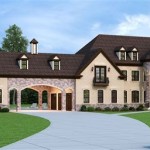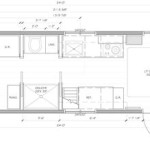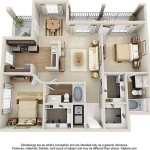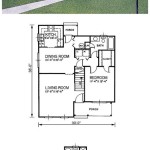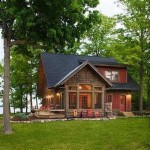How To Make a Roof Framing Plan in Revit
Creating a roof framing plan in Revit is an essential step in the architectural design process, allowing you to visualize and detail the structural elements of the roof. This plan provides critical information for construction, including the layout of rafters, joists, trusses, and other supporting components. This article will guide you through the process of making a roof framing plan in Revit, covering the essential steps and considerations for creating a comprehensive and accurate plan.
1. Define the Roof Geometry
The first step in creating a roof framing plan is defining the roof geometry accurately. This involves establishing the roof slopes, pitches, and overall shape. Revit offers various tools for modeling the roof effectively. You can utilize the Roof tool to create simple gable or hip roofs, or you can employ the complex roof tool for more intricate designs, such as curved or multi-faceted roofs. Ensure that you define the roof slope and pitch accurately, as these values will directly impact the framing layout and material requirements.
When defining the roof geometry, consider the building's overall form and the architectural style. For example, a traditional gable roof might require different framing techniques than a contemporary flat roof. Make sure the roof's layout aligns with the building's architectural design and functional requirements.
2. Create the Framing Grid
Once the roof geometry is defined, you can create the framing grid. The framing grid consists of a series of lines representing the location of rafters, joists, and trusses. Revit offers various tools to create framing grids, including the Line tool, the Grid tool, and the Framing tool. The choice of tools depends on the complexity of the roof design.
For simple roof designs, the Line tool or Grid tool can be sufficient. However, for complex layouts or when using structural framing components like trusses, the Framing tool provides more advanced options. The Framing tool allows you to specify the framing type, material, and dimension, ensuring accuracy in the plan.
3. Define Framing Members
With the framing grid established, the next step is to define the specific framing members. This involves specifying the type of framing element, such as rafters, joists, or trusses, and their material, size, and spacing. Revit offers a library of pre-defined framing elements, allowing you to select appropriate options based on project requirements.
You can also create custom framing elements using the Framing tool, tailoring them to specific design parameters. For example, if you require a specific type of truss for a particular area of the roof, you can create a custom truss element in Revit. Defining the framing members accurately ensures that the roof plan reflects the actual construction details.
4. Add Structural Details
A comprehensive roof framing plan should include structural details, such as connections, supports, and bracing. These details provide critical information for the construction team, ensuring the roof's stability and structural integrity. Revit offers various tools for adding structural details, including the Detail tool, the Annotation tool, and the Symbol tool. Utilize these tools to represent connections, supports, and bracing in the plan.
For example, you can use the Detail tool to draw beams, columns, and other supporting elements. The Annotation tool allows you to add text and dimensions to clarify details. Symbols can be used to represent specific structural elements, such as hangers, joist ties, and shear plates. By adding these details, you ensure that the roof plan provides a complete picture of the structure.
5. Add Layout and Labeling
Once all the framing components and structural details are added, you can complete the roof framing plan by adding layout information and labels. This includes adding dimensions, notes, and symbols to clarify specific elements and their relationships within the plan. Revit offers various tools for adding layout information and labeling, including the Dimension tool, the Text tool, and the Symbol tool.
Add dimensions to show the spacing of framing members, lengths of rafters, and overall roof dimensions. Use text boxes to add notes, specifications, or other relevant information. Symbols can be used to identify specific structural elements, such as fire stops, vents, or other features. Labeling the plan clearly ensures that all the information is easily accessible and understood by the construction team.
6. Review and Finalize
After completing the roof framing plan, it's vital to review it thoroughly for accuracy and completeness. Ensure that all the framing members, structural details, and labels are correctly represented and that the plan aligns with the overall building design. You can utilize Revit's review and checking functionalities to verify the plan's accuracy and completeness.
Revit provides various tools for reviewing and checking plans, including the clash detection tool, the dimension check tool, and the material take-off tool. These tools can help you identify potential errors or inconsistencies in the plan before it's finalized. Once you're satisfied with the accuracy and completeness of the plan, you can finalize it and share it with the construction team for use in the building process.

Revit Structural Framing Tutorial Roof With Beam Systems

3 How To Create Roof Plan Design The Trick Revit Tutorial

Framing Roof Panels Trusses Rafters In Revit Webinar Arkance Lithuania

Create The Revit Roof Framing Plan

Solved Roof Structure Autodesk Community

Solved Structural Framing Plan Autodesk Community

Roof Plans In Revit Episode 7

Solved Is There An Easier Faster Way Of Creating Complex Roof Constructions Example Included Autodesk Community

How To Create A Roof Framing Plan In Archicad

Revit Roof Framing Plan Learn
Related Posts


